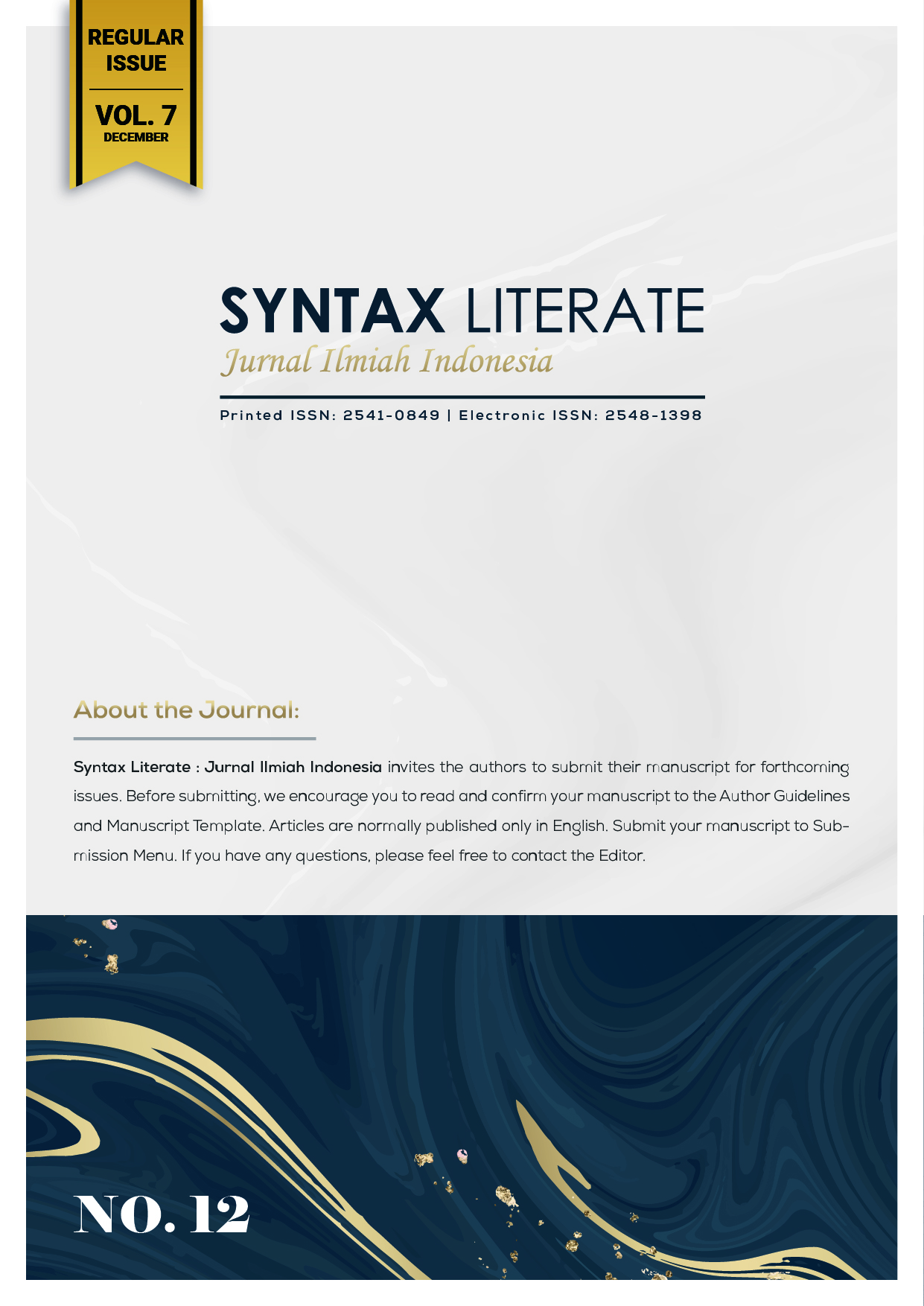Digital Architecture Planning Transformation Based on The Open Group Architecture Framework ADM
Abstract
Companies need the role of Information Management Systems and Technology to provide convenience for Companies to transform data in an organized manner and implement the goals and objectives of their business strategy, namely increasing revenue, increasing reliability, reducing costs, and focusing on customers. PT XYZ, whose business processes are computerized but have yet to be optimal and integrated, has yet to be able to provide optimal support to improve the Company's performance. The standard method used in this analysis is to utilize Togaf ADM Frame. This research was conducted to produce an enterprise architecture plan through the steps in the Togaf ADM blueprint starting from Introduction, Management Requirements, Vision Design, Business Design, Information Management System Design, and Technology Design to Opportunities and Solutions. This study produces a System/IT blueprint that provides an enterprise architecture plan to address existing problems with a solution plan delivered on a modular framework, integrated systems, policy alignment, and service focus.
Downloads
References
Abdurachman, A. A., Arsyad, M. F., Abdurahman, E., Napitupulu, T. A., & Legowo, N. (2019). Mapping Irrigation Networks with Geographical Information Systems Using Satelite Imagery Data: A Case of Brebes Regency, Indonesia. CommIT (Communication and Information Technology) Journal, 13(1), 1–8.
Andini, S. (2021). Cloud-Based Information Technology Architecture Modeling Computing. International Journal Of Dynamics In Engineering And Sciences ( Ijdes ), 6(2), 51–56.
Encep, M. (2020). Cloud migration Design to Support the Realization of Smart Campus Using the Adoption Model Roadmap for Cloud Computing. Bina Nusantara University.
Geasela, Yemima Monica; Andry, J. F. (2019). Design Enterprise Architecture in CPO Industry using Togaf Adm Frameworktle. International Journal on Soft Computing, 10(1), 2022–2027. https://doi.org/10.21917/ijsc.2019.0286
Irfan, M., Putra, S. J., & Alam, C. N. (2018). E-Readiness for ICT implementation of the higher education institutions in the Indonesian. 2018 6th International Conference on Cyber and IT Service Management (CITSM), 1–6.
Jati, H., & Destiana, B. (n.d.). Digital Transformation (1st ed.). UNY Press.
Josey, Andrew; Homford, D. (n.d.). The TOGAF® Standard – A Pocket Guide (10th ed.). Van Heren.
Leonardo S, R. D. (2018). Enterprise Architecture Development of Contact Center Services Using the Togaf Framework (Case Study PT. XYZ). BINA NUSANTARA UNIVERSITY.
Leonardos, N., Leonardos, S., & Piliouras, G. (2020). Oceanic games: Centralization risks and incentives in blockchain mining. Mathematical Research for Blockchain Economy: 1st International Conference MARBLE 2019, Santorini, Greece, 183–199.
Marinescu, D. C. (n.d.). Cloud Computing: Theory and Practice (N. Merken, Steve; Robertson, Naomi; Sekar (ed.); 3rd ed.). Morgan Kaufmann Publishers.
Muttaqin, F., Wahanami, H. E., & Saputro, F. A. f E. (2017). Enterprise Architecture Design Supporting the Implementation of Cloud Computing PT Angkasa Pura 1 (Persero) Juanda Airport Using Togaf Adm. Journal of Information and Communication Technology, XII(1), 63–74.
Muttaqin, F., Wahanani, H. E., & Saputro, F. A. E. (2017). Perancangan Arsitektur Enterprise Pendukung Penerapan Cloud Computing PT. Angkasa Pura 1 (Persero) Bandara Juanda Menggunakan TOGAF ADM. Scan: Jurnal Teknologi Informasi Dan Komunikasi, 12(1), 63–74.
Negreiros, I., Francisco, A. C. C., Fengler, F. H., Faria, G., Pinto, L. G. P., Tolotto, M., Rogoschewski, R. B., Romano, R. R., & Netto, R. S. (2020). Smart Campus® as a living lab on sustainability indicators monitoring. 2020 IEEE International Smart Cities Conference (ISC2), 1–5.
Nugraha, G., & Saefudin, S. (2022a). Perencanaan Enterprise Architecture Penerima Bantuan Sosial Covid-19 Dengan Menggunakan TOGAF di Gedebage Bandung. Jurnal Wahana Informatika, 1(2), 77–103.
Nugraha, G., & Saefudin, S. (2022b). Planning Enterprise Architecture Information System Distribution of Population Data Recipients of Social Assistance During the Covid-19 Pandemic Using The Open Group Architecture Framework (TOGAF). Jurnal Wahana Informatika, 1(2), 77–103.
Rumetna, M. S. (2018). Make of Cloud Compute in The Business World: Literary Research. Jurnal Teknologi Informasi Dan Ilmu Komputer, 5(3), 309–311. https://doi.org/10.25126/jtiik.201853595
Sardjono, W., & Vijayanto, R. M. (2021). Designing of IT master plan based on TOGAF ADM framework in the regional water utility company. IOP Conference Series: Earth and Environmental Science, 729(1), 012016. https://doi.org/10.1088/1755-1315/729/1/012016
Sihab, S., Permana, M. A., Syabani, G., Sukmawan, D., Erfina, A., & Jatmiko, W. (2022). Perancangan Arsitektur Sistem Informasi Penjualan FE Kitchen Menggunakan Metode Zachman Framework. Jurnal Sistem Informasi Dan Teknologi Informasi, 4(2), 90–98.
Solichin, A., & Hasibuan, Z. A. (2012). Pemodelan Arsitektur Teknologi Informasi Berbasis Cloud Computing Untuk Institusi Perguruan Tinggi di Indonesia. Semantik, 2(1).
Sugiyono. (2021). Metode Penelitian Kuantitatif Kualitatif Dan R & D (2 Ctk 3). CV Alfabeta.
Widjaja, C. F., & Assegaff, S. (2021). Perancangan Enterprise Architecture Planning Menggunakan Zachman Framework Pada PT. Palma Abadi. Manajemen Sistem Informasi, 6(1), 118–128. https://doi.org/10.33998/jurnalmanajemensisteminformasi.2021.6.1.1008.
Copyright (c) 2022 Wahyu Budianto, Surahman Surahman, Komaruddin Komaruddin, Teguh Yulianto

This work is licensed under a Creative Commons Attribution-ShareAlike 4.0 International License.











